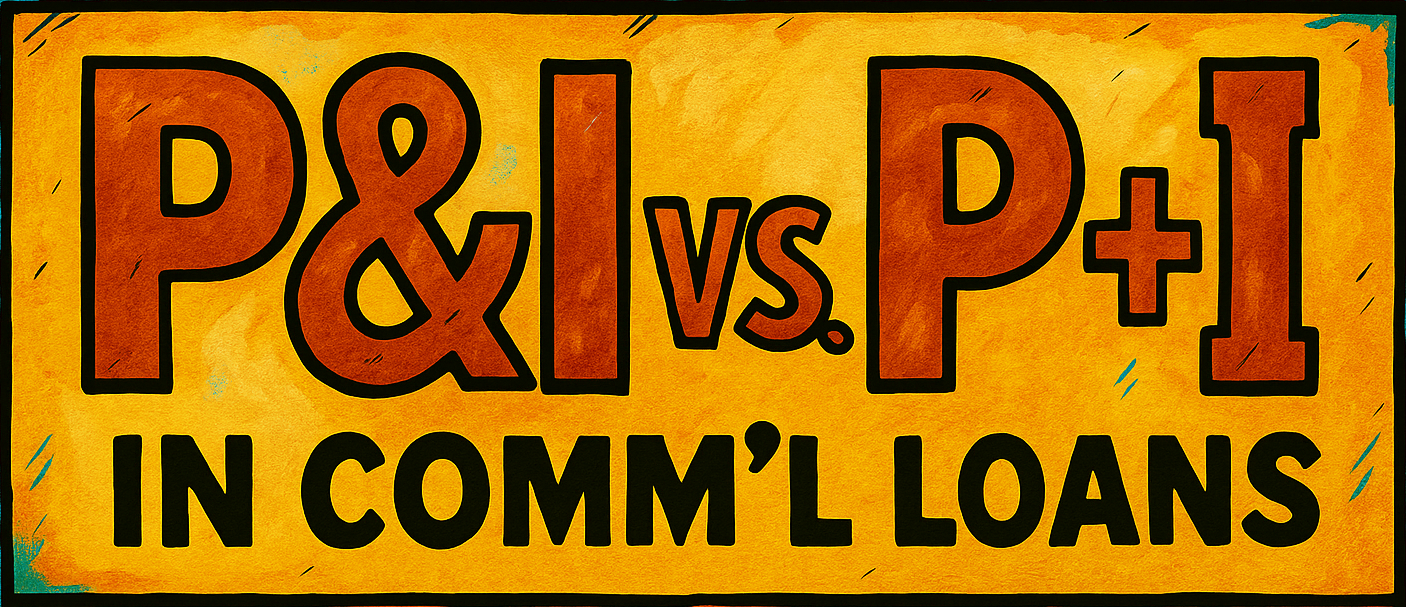P&I vs. P+I
“A little tweak in how you pay”

P&I vs. P+I (Level Principal) in Commercial Loans
In commercial loans, P&I (Principal and Interest) and P+I (Principal plus Interest…often called “level principal“) refer to different ways of structuring loan repayments, particularly in relation to how principal and interest payments are handled.
When taking out a commercial loan, understanding the repayment structure is essential for managing your cash flow and financial planning.
P&I (Principal and Interest)
What it is: This is the most common loan repayment structure. Each monthly payment includes both principal (the amount borrowed) and interest (the cost of borrowing). The monthly payment remains constant (fixed) throughout the term of the loan. The loan balance decreases gradually over the loan term.
How it works: In the early stages, most of the payment goes toward interest (and a small portion toward principal), but as the loan progresses, a larger portion goes toward paying down the principal. By the end of the loan term, the loan is fully paid off.
P+I (Level Principal)
What it is: This repayment method features a fixed principal payment each month, but the total monthly payment decreases over time. This is because the interest is calculated on the remaining balance, which decreases as the principal is paid down.
How it works: In this structure, the principal payment remains constant throughout the loan term. However, as the remaining balance decreases, the interest payment also decreases, resulting in a lower total monthly payment over time.
Key Differences Between P&I and P+I (Level Principal)
Feature | P&I | P+I (Level Principal) |
Monthly Payment | Fixed throughout the loan term | Starts higher but decreases over time |
Principal Repayment | Increases over time as interest decreases | Constant every month |
Interest Payment | Decreases over time | Decreases over time |
Suitability | Ideal for consistent cash flow management | Better for borrowers wanting to pay down the loan faster, with decreasing payments over time |
Comparison of P&I vs. P+I (Level Principal) for a $5 Million Loan
| Feature | P&I (Principal and Interest) | P+I (Level Principal) |
|---|---|---|
| Loan Amount | $5,000,000 | $5,000,000 |
| Term | 10 years (120 months) | 10 years (120 months) |
| Interest Rate | 8% annually | 8% annually |
| Fixed Monthly Payment | $60,664 (same each month) | Starts at $75,000 then decreases |
| Principal Repayment | Increases over time | Constant $41,666 each month |
| Interest Payment | Decreases over time | Decreases over time |
| Total Payment Over Term | $7,279,655 (approx.) | $7,016,666 (approx.) |
| Final Payment | $60,664 (same each month) | Decreases each month, ends at $41,944 in the final month |

Summary:
P&I (Principal and Interest) has a fixed monthly payment throughout the loan term, making it predictable and easy to budget.
P+I (Level Principal) has a fixed principal payment each month, with the total monthly payment starting higher and then decreasing over time. This structure leads to a lower total payment over the loan term but requires higher initial payments.

